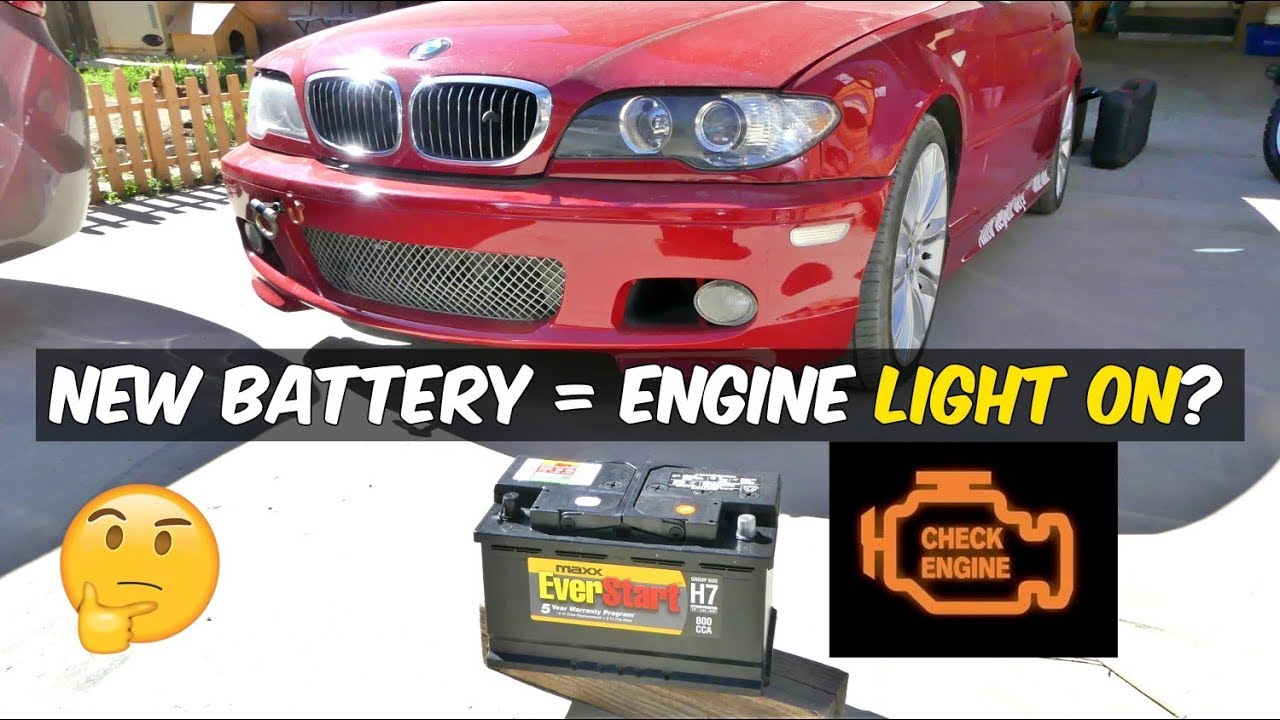Seeing the check engine light after replacing your battery can be confusing. You might think something is very wrong.
Changing a car battery should be simple. But sometimes, the check engine light comes on afterward. This can be puzzling and even worrying. Is there a real problem with your car? Or is it just a minor issue related to the battery change?
In this post, we will explore common reasons for this light coming on after a battery replacement. We will help you understand what to do next. So, let’s dive in and clear up the confusion.
Common Causes
A check engine light after battery replacement can be caused by resetting the car’s computer. Other common causes include loose connections or faulty sensors. Always ensure battery terminals are clean and secure.
Loose Connections
Loose connections can cause the check engine light to come on. Battery terminals must be tight. If they are loose, the light may appear. Check cables for any loose ends. Ensure all connections are secure.
Faulty Sensors
Faulty sensors can also trigger the check engine light. The oxygen sensor is important. If it fails, the light can turn on. The mass airflow sensor must work well. A bad sensor can cause problems. Ensure all sensors are checked.

Credit: www.reddit.com
Initial Checks
Check the battery terminals. They should be clean and tight. Corrosion can cause issues. Use a wire brush to clean them. Loose connections can trigger the check engine light.
Inspect the fuse box. A blown fuse can be a problem. Check each fuse carefully. Replace any blown fuses. Secure fuses can resolve many issues.
Resetting The System
Disconnect the negative battery cable first. Then, disconnect the positive cable. Wait for at least 15 minutes. This allows the system to reset. Reconnect the positive cable first. Finally, reconnect the negative cable.
A scanner can read and reset codes. Plug the scanner into the OBD-II port. Follow the scanner’s instructions. Clear the codes. The check engine light should turn off. If not, there may be another issue.

Credit: www.youtube.com
Understanding Error Codes
Experiencing a check engine light after battery replacement? It could be due to error codes needing reset. Understanding these codes can help diagnose the issue quickly.
Reading Codes
After replacing your car battery, you might see the check engine light. This can be confusing. Reading error codes is the first step to understand the problem. Error codes are stored in your car’s computer. You need a code reader to see them. These readers can be bought or borrowed. Plug the reader into the car’s diagnostic port. The port is usually under the dashboard. Once connected, the reader will show the codes.
Interpreting Codes
Interpreting error codes is the next step. Each code is linked to a specific issue. The code reader’s manual can help you understand the codes. You can also search online for code meanings. Some codes are simple, like a loose gas cap. Others might need a mechanic’s help. Always start with the easy fixes first. If you can’t solve it, visit a professional.
Addressing Sensor Issues
The oxygen sensor measures the amount of oxygen in the car’s exhaust. It helps the engine run efficiently. After replacing the battery, this sensor may need resetting. It can cause the check engine light to turn on. If the light stays on, it might need cleaning or replacement. Make sure it is working well for good fuel economy.
The mass airflow sensor checks the air coming into the engine. It ensures the right mix of air and fuel. After a battery change, it can reset. This might turn on the check engine light. If the light does not go off, check the sensor. It might need cleaning or replacement. This sensor is key for the engine’s performance.
Professional Help
A check engine light after a battery replacement can be confusing. This light may signal a serious issue. It is best to consult a mechanic if the light stays on. A mechanic has tools to read error codes. They can identify the problem quickly. Ignoring the light might cause more damage.
When you visit a mechanic, they will connect a scanner to your car. This scanner reads the car’s computer. The mechanic then explains the issue. They suggest necessary repairs or resets. The process is usually quick. The goal is to keep your car running smoothly.
Preventative Measures
Regular maintenance keeps your car running smoothly. It prevents many issues. Check your engine oil. Inspect the air filter. Look at the coolant level. These checks can stop problems. A clean engine runs better. It lasts longer. Many small fixes can avoid big problems.
Proper battery installation is key. Ensure the battery fits well. Secure the connections tightly. Loose connections can cause issues. The engine light may come on. A bad battery can lead to other problems. Always check the battery voltage. Use the right tools. This avoids damage.

Credit: www.reddit.com
Diy Troubleshooting
To begin, gather some basic tools. You will need a wrench to remove battery terminals. A voltmeter helps check the battery voltage. A code reader is useful for reading engine error codes. A pair of gloves keeps your hands clean. Lastly, a flashlight helps you see better in dark areas.
First, turn off the car and remove the keys. Safety first. Next, open the hood and locate the battery. Disconnect the negative terminal using the wrench. Then, disconnect the positive terminal. Remove the old battery and replace it with the new one. Connect the positive terminal first, then the negative. Tighten the terminals securely.
After the battery is connected, start the car. Check if the engine light is still on. If it is, use the code reader to check for error codes. Write down any codes you find. Look up these codes in your car’s manual. This can help identify the issue. If unsure, consult a mechanic.
Frequently Asked Questions
Why Is My Check Engine Light On After I Changed My Battery?
Your check engine light may be on due to a reset of the car’s computer. Drive a few miles to see if it turns off. If it stays on, there might be another issue. Have a mechanic check for any underlying problems.
How Do I Clear My Check Engine Light After A Dead Battery?
Disconnect the car battery for 10-15 minutes. Reconnect it and start the car. This resets the check engine light.
Can A Battery Cause The Check Engine Light To Come On?
Yes, a faulty battery can trigger the check engine light. Low voltage may cause various sensors to malfunction.
How Long Does It Take For A Car To Reset After Changing The Battery?
A car typically resets within 10 to 15 minutes after changing the battery. Ensure all connections are secure.
Conclusion
A check engine light after battery replacement can be frustrating. Regular checks can prevent surprises. Ensure battery connections are secure. Check for potential issues like sensor faults. Consult a professional if the light persists. Proper maintenance keeps your vehicle running smoothly.
Always stay proactive to avoid unexpected problems. Your car’s health matters. Pay attention to warning lights for safe driving. Simple steps can save time and money. Keep your vehicle in top shape with regular care.

